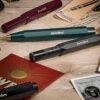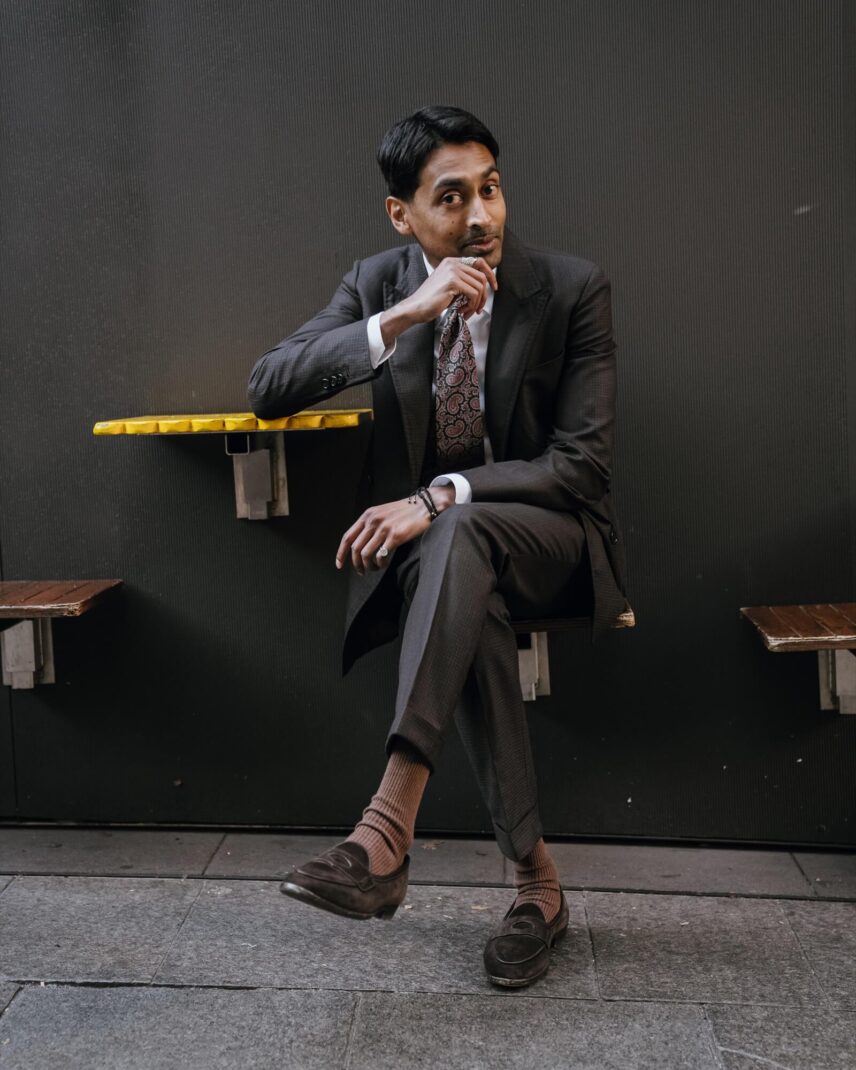This story originally appeared on the Gents Cafe Newsletter. You can subscribe here.
Living in Sydney but originally from Sri Lanka, Fernando Kularatne (@fernando.kul) is an image consultant and tailor. Sparked by old family photos rediscovered by chance, his journey into tailoring led him to found Riley and Sons, while also learning the importance of embracing and expressing himself and his style at the fullest, without feeling the need to conform or please others.
What are your main passions and how do you cultivate them?
My main passion is helping men and women dress better. In a way that’s not stiff and artificial, but in a way that champions natural human behavior. I’ve always believed that clothing plays a huge role in that. The way we dress affects not only how others perceive us, but also how we behave and carry ourselves. It’s the way we interact, connect, and present to the world.
I pursue this passion by constantly studying presentation, proportion, balance, and the psychology behind style choices. I spend a lot of time understanding how certain silhouettes, colours, or fabrics can influence confidence, posture, and presence. And then I bring that knowledge into my work by helping people dress with purpose instead of hiding behind costumes or trends that aren’t really them.
There’s a moment, when a client finally sees themselves reflected back authentically—when their style and their identity click—and they give this little unmistakable smile. That look tells me they feel seen, and that’s when I know I’ve done my job properly.
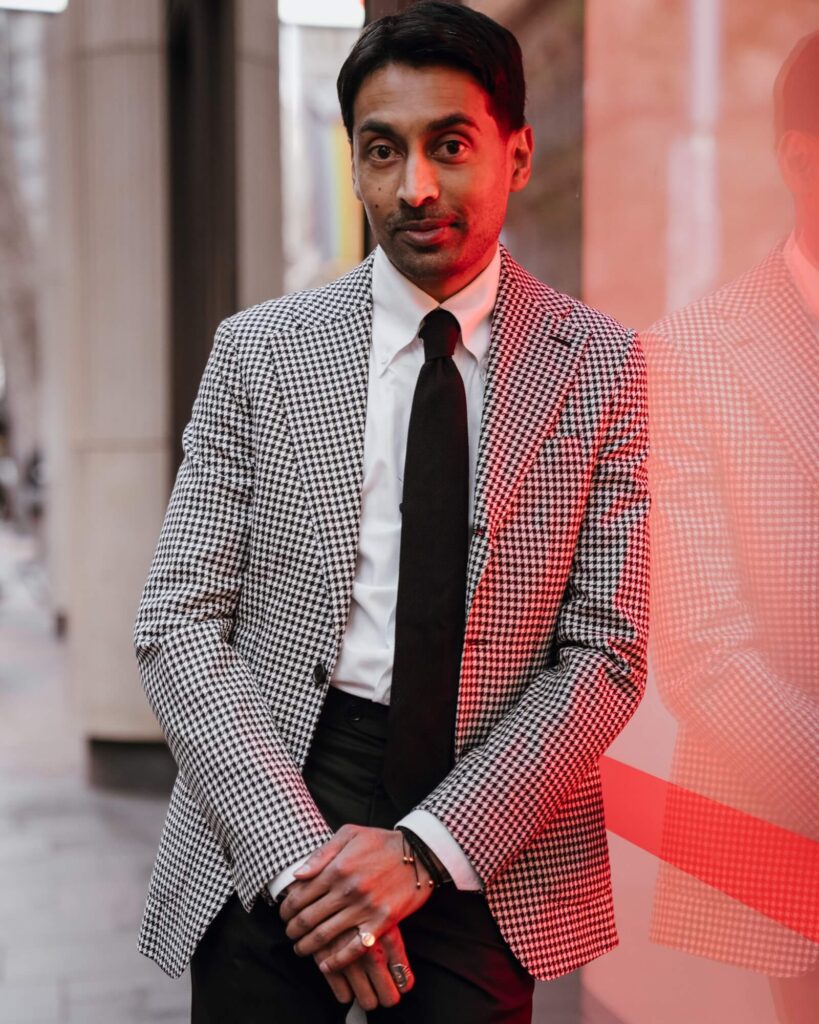
How did you first develop an appreciation for style?
I actually had terrible style up until I was about 20. Things only started to shift when I began going out more and developing a social life after school. Around 18 or 19, the curiosity was there, but 20 was when I really started paying attention and exploring.
In the beginning it was a lot of trial and error — trying what my friends were wearing, realising it didn’t work for me, and not understanding why. Eventually I noticed I was naturally drawn to certain aesthetics, especially 1950s and vintage references. One of my favourite films, Pearl Harbor, actually played a huge part in that discovery. It opened my eyes to a style language that felt more “me.”
From there I started experimenting — suspenders, tucking shirts properly, a more polished finish — and over time it refined into what I wear today. Now my style is chalk and cheese compared to back then: very English-influenced tailoring, classic, traditional, but still versatile. At the core, I like using myself to tell the story, not the garments. The clothes should support the energy I want to convey that day, not shout over it.
What does “being well-dressed” mean to you?
It is fundamentally about good manners. It’s a sign of respect for the world around you, because at the end of the day, we don’t actually dress for ourselves — we don’t spend the day looking at us. Other people do. Your presence can either offend or inspire and uplift. I have no interest in offending, so I make the effort to impress, encourage or inspire through how I present myself.
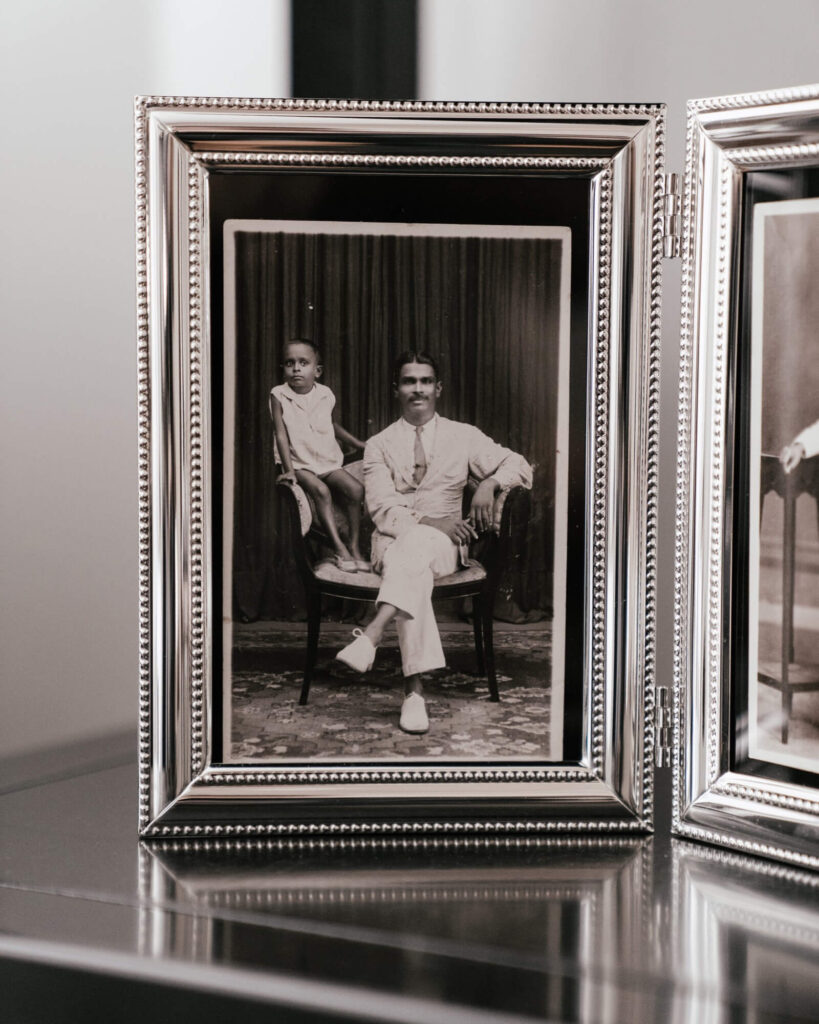
What’s a small habit that has made a big difference in your life?
Learning to say no, unapologetically. For a long time I felt guilty turning down invitations or situations that didn’t align with me. I’d oblige myself to show up, even when I didn’t want to, and eventually realised I wasn’t doing anyone a favour—not myself, and not the people I was with.
Once I began saying no more often, my relationships and interactions actually became more genuine. Everything became more intentional and meaningful, because I was showing up only when I could give my full presence. It started with social events, but now it flows into everyday discipline as well, like saying no to sleeping in when the alarm goes off, or saying no to small temptations when they don’t serve my bigger goals. That one simple habit has reshaped my mindset, my routines, and the standards I set for myself.
What’s a personal ritual that keeps you grounded?
It is my 5 a.m. wake-up. It’s never easy, but the days I honour it I gain two quiet, productive hours before the world starts moving. If I give in and sleep another 20 minutes, the whole day feels sluggish and unfocused. Waking up at five puts me into a sharper rhythm mentally and physically, and that consistency keeps me grounded.
A chance meeting that changed your life?
It happened during a night out at a friend’s birthday. We were front and centre at a club in Sydney watching Apple D App from the Black Eyed Peas perform. In the VIP area off to the side, I noticed a man trying to get my attention. I eventually went over, and he told me he just wanted to say I looked like a gentleman and asked for a photo. I didn’t think much more of it; I thanked him, we chatted briefly, then I went back to the dance floor.
After the set ended, he waved me over again and this time introduced himself properly: he was Hugo, the manager of the Black Eyed Peas. I was stunned. We had a great chat, took another photo, exchanged Facebook details and left it there.
A week later, I got a message from him: “Hey, Will.i.am and I are at Marquee tonight, and we’d love for you to be our guests.” I thought I was being pranked. But I went, and after some back-and-forth trying to track him down, he eventually came to get us and took us upstairs to the private area where Will.i.am was. We all spent the night chatting, and it just turned into this surreal, genuine connection that has lasted to this day.
That whole friendship came from one simple thing: choosing to honour who I am stylistically and energetically.
From there, I ended up helping them choose a venue for Will’s only Sydney performance during his time on The Voice, and whenever he needed local insight, I was the one Hugo would reach out to. Later, when I was travelling the U.S., he helped me in return—pointing me to cities, venues, people to meet. We still talk even now.
That whole friendship came from one simple thing: choosing to honour who I am stylistically and energetically. If I’d tried to blend in that night, or dress to please someone else, none of it would have happened. It reminded me that when you’re aligned with yourself, truly aligned, the world notices, and the right people find you.
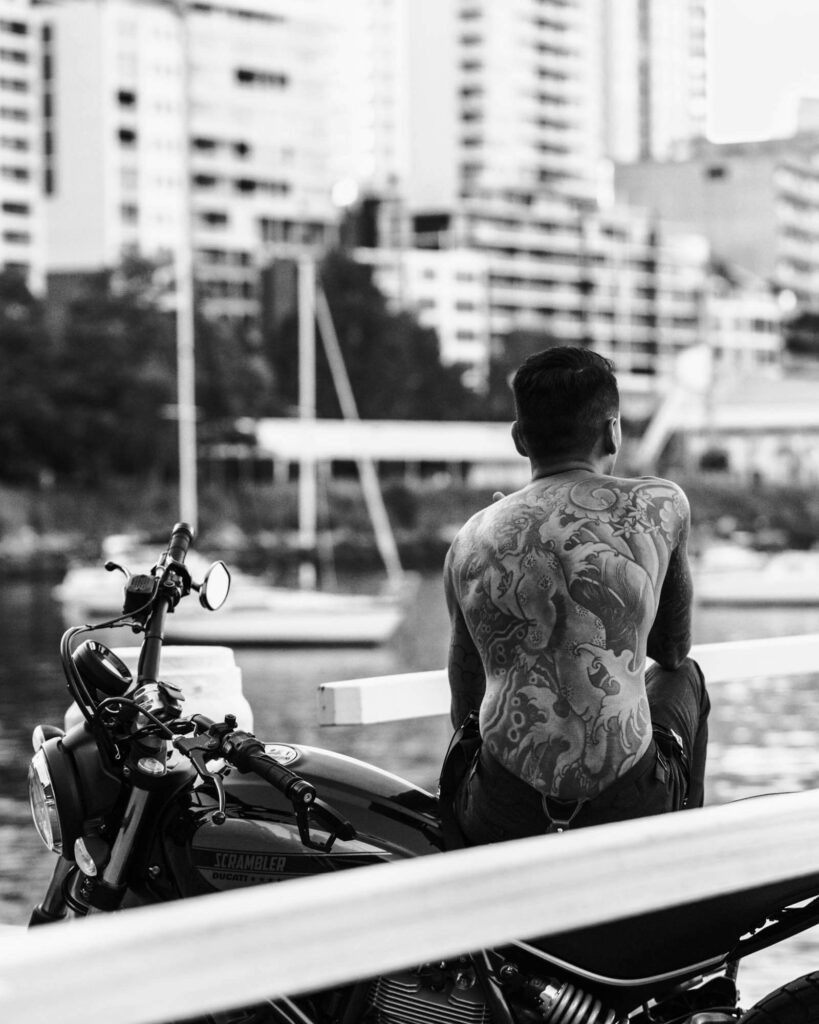
What’s an artwork that profoundly impacted your life, and how did it change your perspective?
There’s a little backstory I need to provide before I answer: I was going through an old family photo album one day and came across photos of my grandfather and great-grandfather. When I saw them, something clicked—it all made sense. I could suddenly see this generational thread running through us; we all just loved getting dressed up. So I posted those two photos along with one of myself on Instagram, writing something like, “This is my story, I can see where I get it from now.”
A few months later, I randomly found a message sitting in my DMs from an artist in Melbourne. I’d never met her before, but she had seen those three photos and had been inspired to create a painting combining all three generations: my great-grandfather, my grandfather, and me all in one image. She had literally painted us together.
When I asked her why, she said something that really stayed with me: she never met her own grandparents, but the way my family presented themselves, with pride and intention, created a sense of connection for her. She said it reminded her how special it is to feel linked to your past and to carry that lineage forward. I offered to buy the painting, but she refused to take payment and insisted on gifting it to me. That artwork now hangs in my office, and it’s one of my most treasured pieces.
It represents everything I try to do through my work: helping people create a legacy through personal presentation. I want my clients’ great-grandchildren to one day look at a photo of them and feel that same sense of connection, inspiration, and pride. Even the name Riley and Sons came from that idea: my great-grandfather’s name was Riley, so the name itself carries that lineage — Riley with his son, then my father, and now me. That painting encapsulates it all: family, legacy, and the timeless power of presentation.
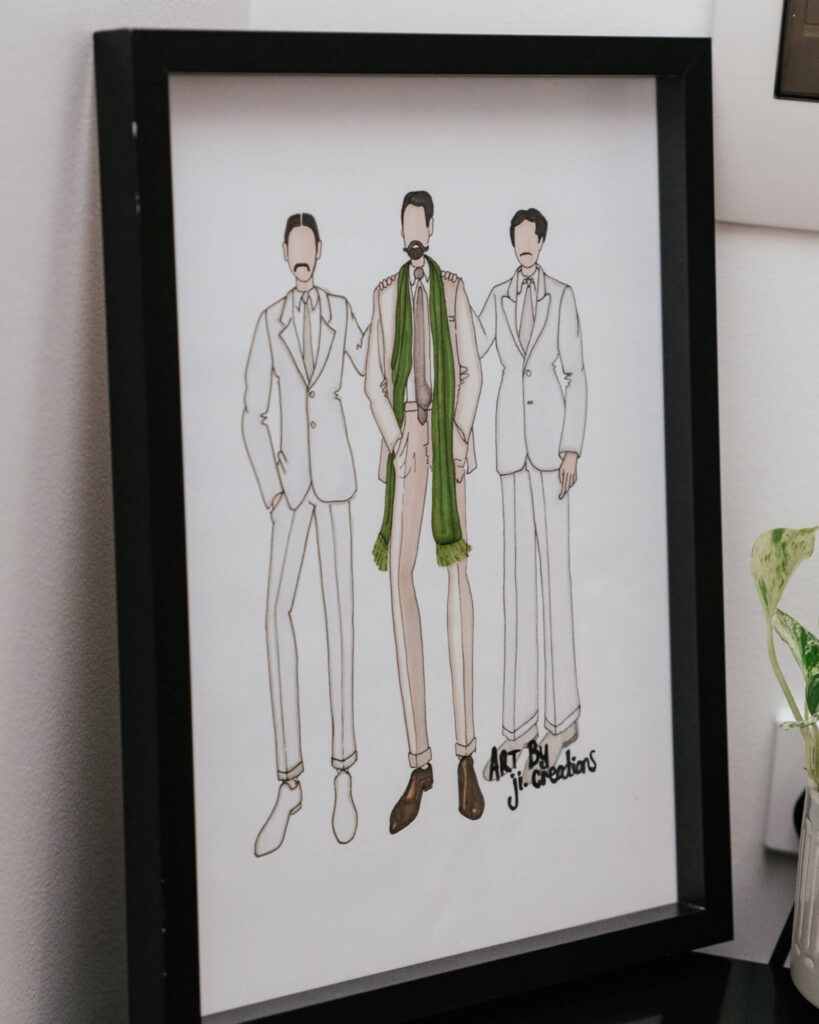
Is there a particular item in your wardrobe or accessory that holds special meaning for you?
It’s my two rings. The first is a lion ring, which has accompanied me since, at 21, I went back to Sri Lanka and visited my grandfather’s old office, which had been left exactly as it was. I never met him, so I was sifting through his drawers just out of curiosity, and I found this ring. I’d never worn jewellery before because nothing ever fit properly, but I slipped this one on and it just felt right. Perfect fit, and it felt natural, like it belonged there. I brought it back to Sydney with me, and it sat in a drawer for about three years. Then once I started tailoring, once I really started stepping into my own expression, I put it on—and I’ve worn it every day since. It represents my lineage, the roots that shaped me before I even knew they were mine.
The second is my signet ring, which is a reminder of the legacy I’m building. Riley and Sons isn’t just a business name; it’s my great-grandfather’s name, and wearing this ring is a reminder that what I’m doing is bigger than me. One day I hope to pass it on, maybe to a child, maybe to someone who carries the vision forward.
There’s also a psychology behind where you wear rings. If you’re right-handed, wearing a ring on your right hand is a conscious decision, and represents the traits you actively embody. The left hand is subconscious, so the traits you’re still growing into. So I wear my grandfather’s ring on my index finger, on my right hand. The index finger represents authority, a willingness to stand for something, to honour your lineage, to say “this is who I am.” On the left hand, the signet ring is instead about the legacy I’m still developing—the future I’m building.
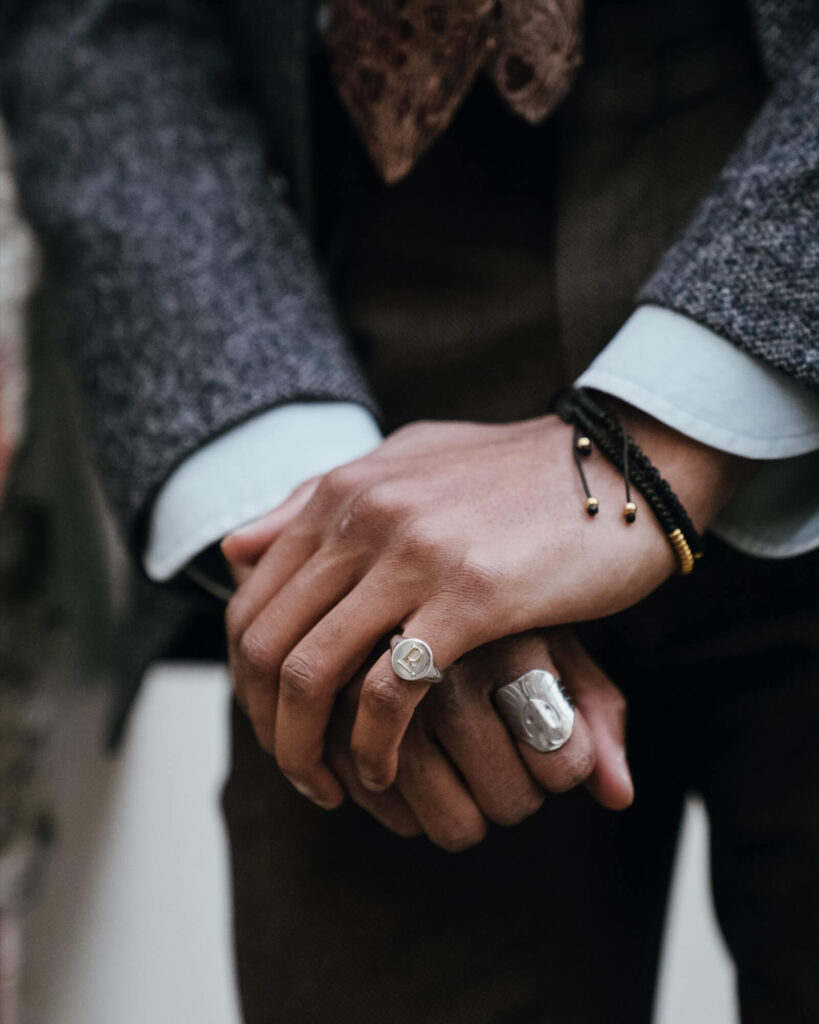
What’s the best gift you’ve ever received, and why did it mean so much to you?
The best gift I’ve ever received came from a friend and client of mine. She once asked why I chose a leopard as the logo of my company, to which I explained that it represents the Sri Lankan leopard, a native animal, and I wanted to bring a piece of heritage into the brand.
But there’s also a deeper principle: they say “a leopard doesn’t change its spots.” I like to flip that idea: you can change your spots, you can change, evolve, and grow. Style, for me, is all about transformation and behavioral change. A leopard is majestic, elegant, ferocious, unapologetic—it does what it needs to do but looks incredible while doing it. That embodies my philosophy of style: look good doing nothing, but also look great at being the best version of yourself.
When I shared this with her, she paused and said she had the perfect gift for me. A week later, she showed up with a vintage 1950s ceramic leopard, and I was completely humbled. She said that when I told her the story of the logo, she knew this had to be in my space.
It meant so much because it wasn’t just a gift; it was a vote of confidence. It was her way of saying she believed in the brand and in what I’m doing. Now, every time I look at it in my office, it’s a reminder to persevere, to be ferocious, and to look good doing it. It’s both a symbol and a motivator, a tangible connection to the people who believe in what we’re building.
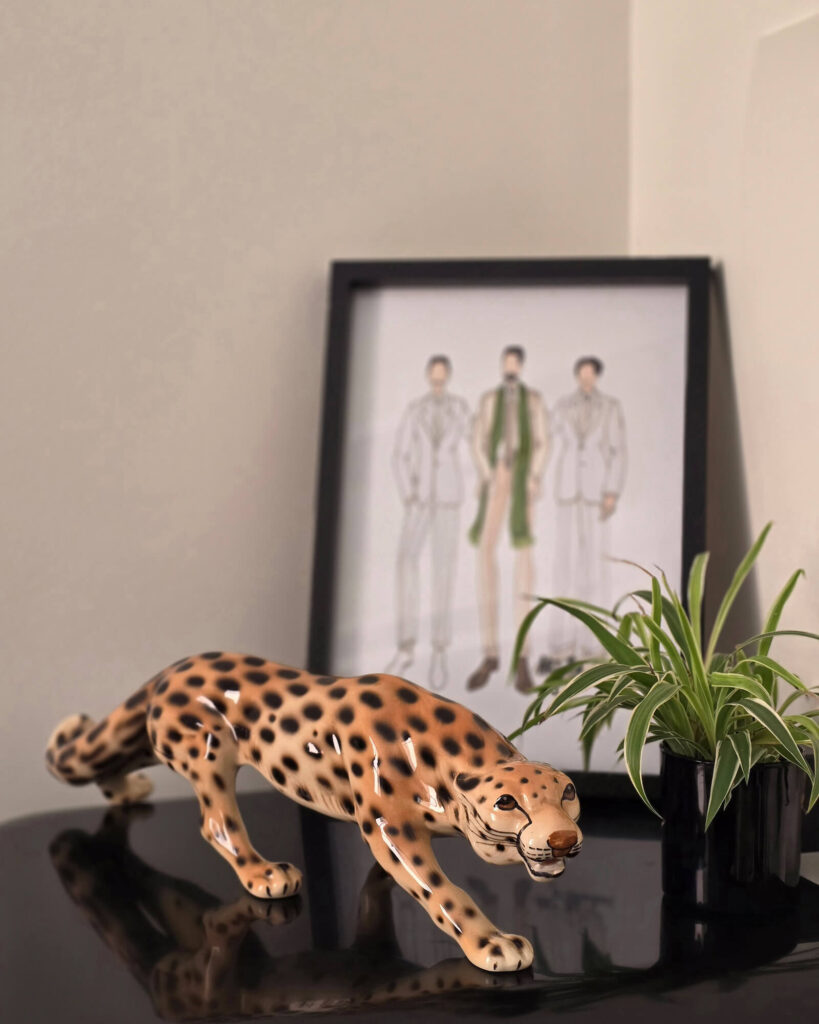
What are your three favorite movies?
I’d choose three movies that are tied together by the common thread of loyalty, a theme that strongly informs both my personal and professional life.
Pearl Harbor: this was the movie that sparked my love for vintage style and pinup aesthetics. That scene with Kate Beckinsale sitting on the rock at sunset in Hawaii really stuck with me. It was about the elegance and respect in the way men dressed and how they interacted with women, asking them to dance, being polished without being flashy. I wanted to embody that sense of refinement. Beyond style, the story of loyalty in the film also resonated with me deeply.
Warrior: this movie is all about loyalty under pressure. Two brothers take separate paths in life, facing personal challenges and adversities, and ultimately confront everything in that pivotal moment at the end. The depiction of loyalty here is powerful: not blind loyalty, but true loyalty that sometimes means having hard conversations, standing by values, and being authentic. I found that incredibly inspiring because it’s a trait that’s often overlooked.
Gladiator: this one struck me with its portrayal of emotional growth and personal journey. The protagonist loses his original loyalty but finds a higher cause to commit to, staying true to his values and fighting for something greater than himself. It’s inspiring to see someone dedicate themselves fully to a purpose beyond personal gain, and it reinforces the idea of loyalty, integrity, and contributing to something bigger than yourself.
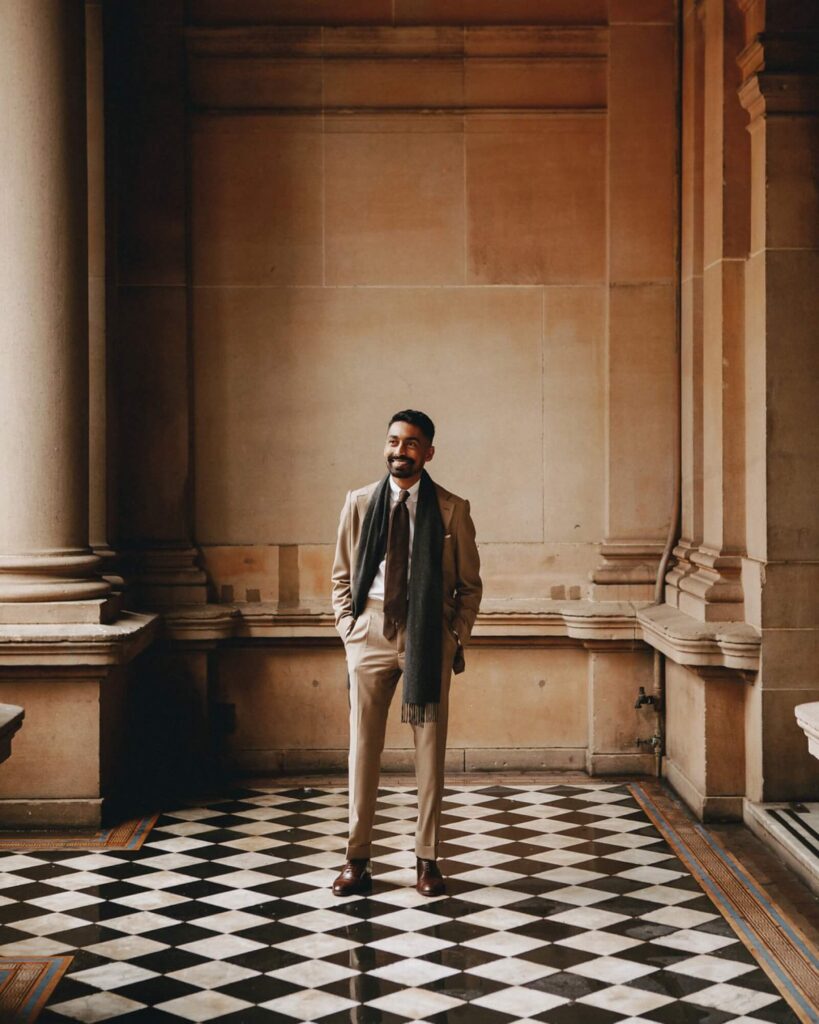
What are your three favorite podcasts?
Mindvalley Podcast: for a long time, this was my go-to. I was in a phase of spiritual, emotional, and mindset growth, so I wanted to absorb everything that could help me develop. Being surrounded by thought leaders sharing hacks on body language, finance, habits, meditation, and daily structure really conditioned me and primed me to level up in every area of life.
The Game with Alex Hormozi: more recently, my focus has shifted to business. This podcast has been invaluable for building my business acumen, mindset, and “muscles.” It’s all about learning and applying practical strategies to grow and scale.
Motivation Daily: this one’s been consistent for me. It’s full of recordings, speeches, and dialogue that can be tough to hear but incredibly energizing. It’s not about being inspired for the sake of it, it’s about showing up, pushing through, and doing the work even when life isn’t perfect. It reminds me that consistency and grit matter more than waiting for the perfect moment or perfect mood.


